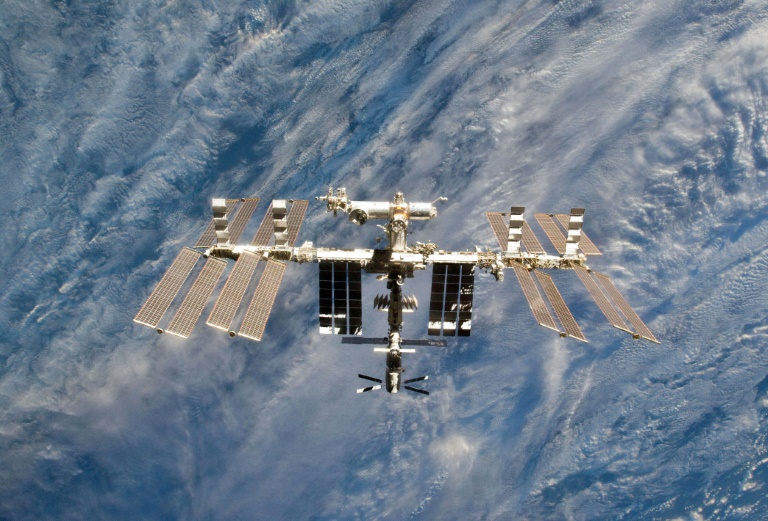The United States denounced Russia on Monday for conducting a “dangerous and irresponsible” missile strike that blew up one of its own satellites, creating a debris cloud that forced the International Space Station’s crew to take evasive action.
Washington wasn’t informed in advance about the test, only the fourth ever to hit a spacecraft from the ground, and will talk to allies about how to respond, said officials.
The move reignites concerns about the growing space arms race, encompassing everything from the development of satellites capable of shunting others out of orbit to laser weapons.
“On November 15, 2021, the Russian Federation recklessly conducted a destructive test of a direct-ascent anti-satellite missile against one of its own satellites,” said Secretary of State Anthony Blinken in a statement.
He added the test had generated over 1,500 pieces of trackable orbital debris and will likely create hundreds of thousands of pieces of smaller orbital debris.
The crew aboard the orbital outpost — currently four Americans, a German and two Russians — had to take shelter in their return ships, the standard “safe haven” alarm procedure in the event of an emergency that might force evacuation.
The station later returned to a “green” alert level, tweeted Russian space agency Roscosmos.
But in his strongly-worded remarks, Blinken said the danger was far from over.
“The long-lived debris created by this dangerous and irresponsible test will now threaten satellites and other space objects that are vital to all nations’ security, economic, and scientific interests for decades to come,” he said.
“Russia, despite its claims of opposing the weaponization of outer space, is willing to jeopardize the long-term sustainability of outer space and imperil the exploration and use of outer space.”
The United States was discussing its response with partners, Blinken added.
In a Pentagon briefing, spokesman John Kirby told reporters the US didn’t receive advanced notice, and was closely watching Russian defense capabilities.
The target of the missile was Cosmos 1408, a 1982 Soviet signals intelligence satellite that has been defunct for several decades, according to space industry analysis company Seradata.
– Danger to satellites –
Anti-satellite weapons (ASATs) are high-tech missiles possessed by few nations.
India was the last to carry out a test on a target in 2019, creating hundreds of pieces of “space junk” strongly criticized by other powers, including the United States.
The United States shot down a satellite in 2008 in response to China demonstrating a similar knockout in 2007.
Jonathan McDowell, a Harvard astrophysicist, told AFP such tests amounted to “saber rattling.”
He added: “The feeling among people in the space industry is that we have way too much debris up there already — to deliberately generate more is just inexcusable.”
The first objects from the debris cloud should start to enter the atmosphere within a few months, but it could be up to 10 years before it clears up entirely, he said.
That could jeopardize what is an increasingly crowded region of space known as “low Earth orbit.”
There are currently more than 4,500 satellites whizzing around the planet, according to the Union of Concerned Scientists, with companies like SpaceX planning to launch up to tens of thousands more, as the private space industry experiences rapid growth.
– New era of space weapons –
Russia is increasingly flexing its muscles in space as it seeks to reassert global influence under the leadership of Vladimir Putin.
Last year, London and Washington accused Moscow of testing a “nesting doll” satellite that opened up and released a sub-satellite to stalk an American satellite.
China meanwhile is developing a weapon known as Shijian-17 with a robot arm capable of grappling satellites.
“The threat is real in that both China and Russia are increasingly building space into their military capabilities,” Director of National Intelligence Avril Haines said at a space seminar in Washington last week.
“They have, effectively, counter space capabilities that allow them to jam some of our satellites, they have directed-energy weapons that allow them to essentially blind sensors on various satellites,” she added.
Despite these tensions, the United States and Russia have maintained strong space ties since the end of the Cold War, cooperating closely on the ISS, which they built together.









